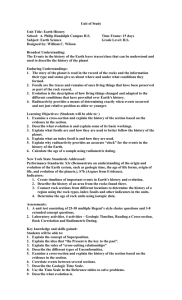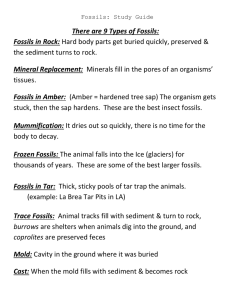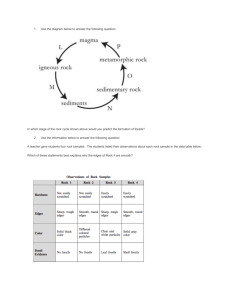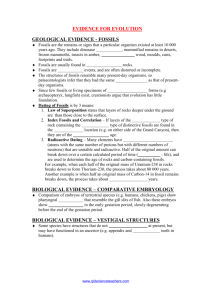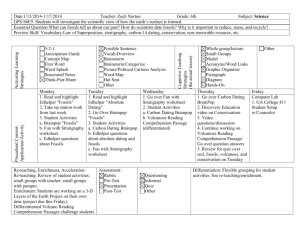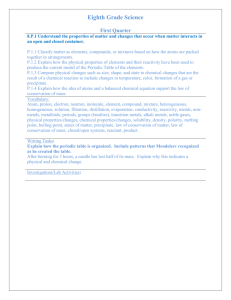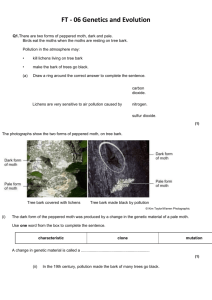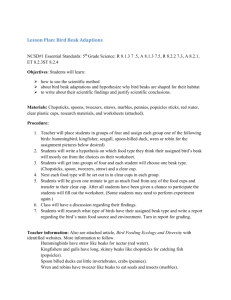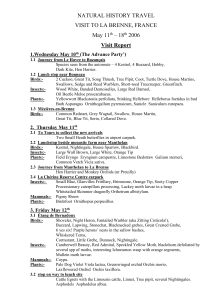figure 1
advertisement
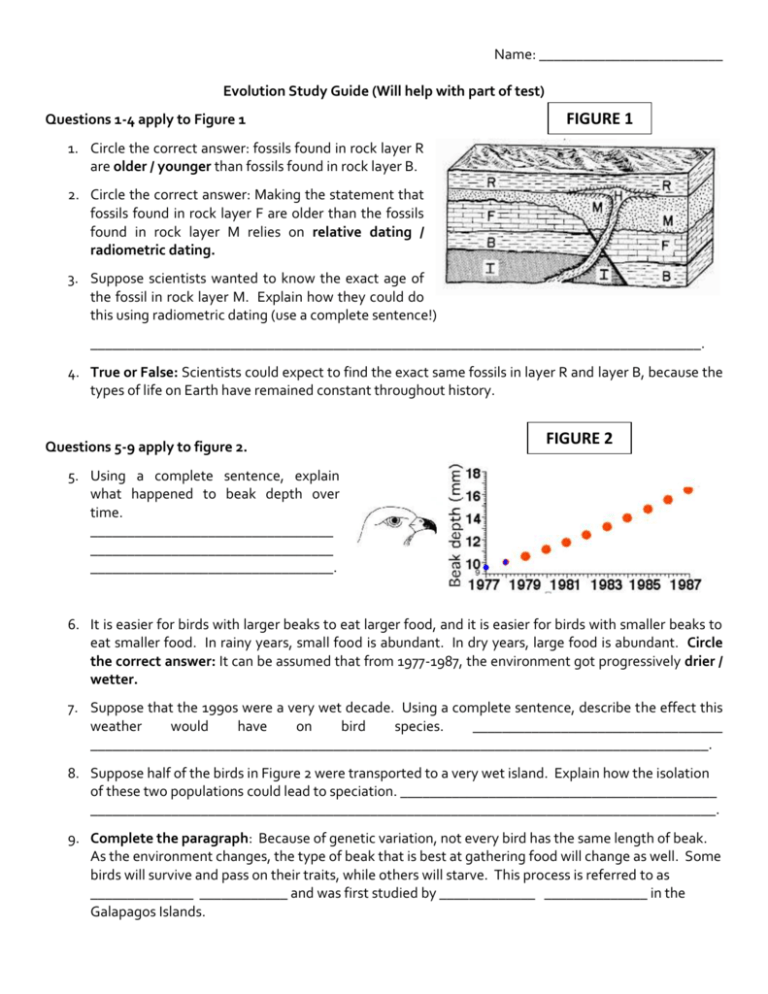
Name: _________________________ Evolution Study Guide (Will help with part of test) Questions 1-4 apply to Figure 1 FIGURE 1 1. Circle the correct answer: fossils found in rock layer R are older / younger than fossils found in rock layer B. 2. Circle the correct answer: Making the statement that fossils found in rock layer F are older than the fossils found in rock layer M relies on relative dating / radiometric dating. 3. Suppose scientists wanted to know the exact age of the fossil in rock layer M. Explain how they could do this using radiometric dating (use a complete sentence!) ___________________________________________________________________________________. 4. True or False: Scientists could expect to find the exact same fossils in layer R and layer B, because the types of life on Earth have remained constant throughout history. Questions 5-9 apply to figure 2. FIGURE 2 5. Using a complete sentence, explain what happened to beak depth over time. _________________________________ _________________________________ _________________________________. 6. It is easier for birds with larger beaks to eat larger food, and it is easier for birds with smaller beaks to eat smaller food. In rainy years, small food is abundant. In dry years, large food is abundant. Circle the correct answer: It can be assumed that from 1977-1987, the environment got progressively drier / wetter. 7. Suppose that the 1990s were a very wet decade. Using a complete sentence, describe the effect this weather would have on bird species. __________________________________ ____________________________________________________________________________________. 8. Suppose half of the birds in Figure 2 were transported to a very wet island. Explain how the isolation of these two populations could lead to speciation. ___________________________________________ _____________________________________________________________________________________. 9. Complete the paragraph: Because of genetic variation, not every bird has the same length of beak. As the environment changes, the type of beak that is best at gathering food will change as well. Some birds will survive and pass on their traits, while others will starve. This process is referred to as ______________ ____________ and was first studied by _____________ ______________ in the Galapagos Islands. 10. True or False: Mutations introduce genetic variation into a population. 11. Matching: Match each of the five pieces of evidence for evolution to their definition. ______1. Homologous Structures A. A body structure that once had a purpose but now does not ______2. DNA B. The preserved remains of organisms demonstrate that life on Earth has evolved ______3. Vestigial Structures C. When developing, many animal fetuses look similar ______4. Fossils D. All living things on Earth are composed of the same four DNA bases ______5. Embryos E. Different living things contain similar body structures 12. Using a complete sentence, Define fitness: _______________________________________________ ____________________________________________________________________________________. 13. Which of the following is TRUE about adaptations? a. They develop in response to environmental changes b. They are heritable c. They benefit the survival of the organism d. All of the above 14. What is an endemic species? ___________________________________________________________ __________________________________________________________________________________. Assessment: Case Study In the 18th century, the English peppered moth looked like the one pictured on the left. Its’ light coloration was useful to camouflage itself in the trees of its habitat. After the industrial revolution, the air became much more polluted and all of the trees got darker in color. Overtime, most of the individuals in the moth population looked like the moths on the right. BEFORE AFTER 15. Explain why being dark in color was an adaptation for the peppered moth using at least one complete sentence. ____________________________________________________________________________ _____________________________________________________________________________________. 16. Using the phrase "natural selection," explain why the moth population became darker in color. ______ _____________________________________________________________________________________.



